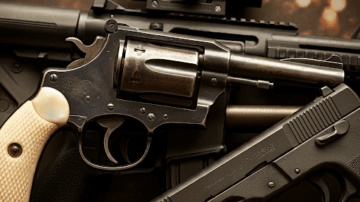A Generation Under Fire: School Shootings in the United States Vs Other Development Countries

A Generation Under Fire: School Shootings in the United States
The scourge of school shootings has become a terrifying reality for American children, parents, and educators. Over the past 25 years, these acts of violence have not only claimed innocent lives but also left deep scars on the nation’s psyche. While the issue is complex and multifaceted, understanding the scope of the problem is the first step towards finding solutions.
A Grim Toll:
Since the Columbine High School massacre in 1999, which shocked the nation and brought the issue to the forefront, there have been hundreds of school shootings in the United States. While definitions of “school shooting” vary, organizations like Everytown for Gun Safety research incidents of gunfire on school grounds.
Their data reveals a disturbing trend:
* Over 160 incidents of gunfire on school grounds in 2024 alone. This includes incidents where a gun was fired, brandished, or a bullet hit school property, regardless of the number of victims.
* 48 deaths and 108 injuries in 2024. These numbers highlight the devastating consequences of gun violence in schools.
The Washington Post maintains a database tracking school shootings specifically where a gun was fired and someone other than the shooter was injured or killed. Their data, going back to 1999, reveals:
* Over 338,000 students have experienced gun violence at school since Columbine. This staggering number underscores the widespread impact of this issue.
These figures represent a fraction of the true cost. Beyond the physical casualties, school shootings leave lasting trauma on survivors, disrupt communities, and erode the sense of safety that should be inherent in educational environments.
Factors Contributing to the Crisis:
The causes of school shootings are complex and interwoven. Some of the key factors include:
* Easy access to firearms: The prevalence of guns in the United States, coupled with lax gun control laws in many states, makes it easier for individuals to obtain firearms.
* Mental health challenges: Many perpetrators of school shootings have a history of mental health issues, highlighting the need for improved access to mental health care and support.
* Social isolation and bullying: Feelings of isolation, rejection, and being bullied can contribute to feelings of anger and resentment, which can, in some cases, lead to violence.
* Copycat effect: High-profile school shootings can inspire copycat attacks, particularly when media coverage glorifies the perpetrators.
* Culture of violence: The normalization of violence in media and entertainment can desensitize individuals to its consequences.
The Path Forward:
Addressing the issue of school shootings requires a multifaceted approach. Some potential solutions include:
* Stricter gun control laws: Implementing stricter background checks, banning assault weapons, and limiting high-capacity magazines can help reduce gun violence.
* Improved mental health support: Increased funding for mental health services, early intervention programs, and reducing the stigma surrounding mental health can help identify and support individuals at risk.
* Creating safer school environments: Implementing security measures, such as metal detectors and active shooter drills, while also fostering a positive and supportive school climate can help prevent violence.
* Addressing social and cultural factors: Promoting empathy, conflict resolution skills, and responsible media consumption can help create a less violent society.
Conclusion:
School shootings are a complex and tragic problem with no easy solutions. However, by acknowledging the scope of the issue, understanding the contributing factors, and implementing comprehensive prevention strategies, we can work towards creating safer schools and communities for all. The time for action is now. We owe it to our children to create a world where they can learn and grow without fear.
GUN VIOLENCE VS OTHER DEVELOPED COUNTRIES
* Handguns: These are the most prevalent firearms used in mass shootings overall, and school shootings are no exception. Their concealability and ease of access make them a frequent choice.
* Semi-automatic rifles: These rifles, like the AR-15 style rifle, have been used in many high-profile school shootings due to their high capacity magazines and ability to inflict significant damage.
It’s important to note that the focus on specific gun models can sometimes distract from the larger issue of easy access to firearms in general.
Comparing US School Gun Violence to Other Developed Countries:
The United States has a significantly higher rate of school gun violence compared to other developed countries. This disparity is stark and alarming:
* Frequency: School shootings are far more frequent in the US than in any other developed nation.
* Fatalities: The number of deaths resulting from school shootings is also disproportionately high in the US.
Some key factors contributing to this difference include:
* Gun laws: The US has significantly more relaxed gun control laws compared to most other developed countries, making it easier to obtain firearms.
* Gun culture: The United States has a strong gun culture, with firearms often seen as a symbol of freedom and self-reliance.
* Mental health: While mental health issues are a global concern, access to mental health care and support can be more challenging in the US.
Examples of differences:
* Australia: After a mass shooting in 1996, Australia implemented strict gun control measures, including a ban on semi-automatic rifles and a buyback program. Since then, they have not experienced another mass shooting.
* Canada: While Canada has a higher rate of gun ownership than many other developed countries, they have stricter gun control laws than the US, including mandatory background checks and licensing requirements. Their rate of school shootings is significantly lower.
* United Kingdom: The UK has some of the strictest gun control laws in the world, and school shootings are extremely rare.
The evidence suggests that stricter gun control measures, coupled with improved mental health support and a focus on addressing social and cultural factors, can significantly reduce gun violence, including in schools.
tik4tat family of portals research team job.tik4tat.com-Tik4invest.com- Mhmind.com
Your Life–Your News


